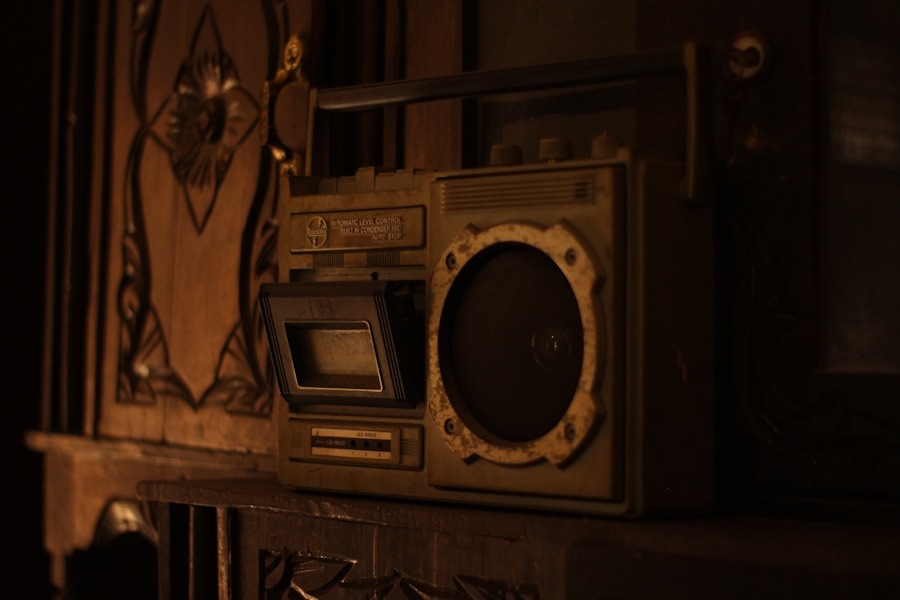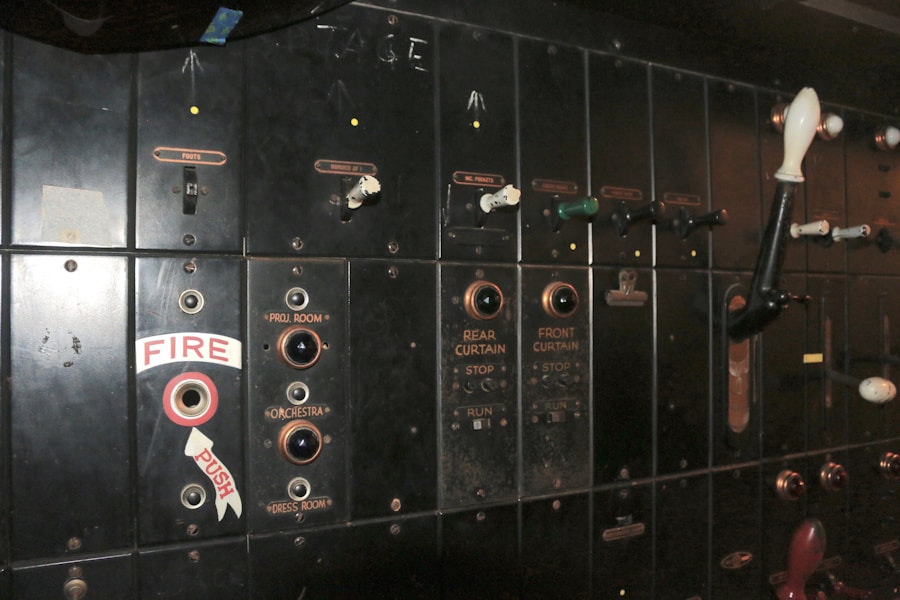Throughout history, the use of sound to evoke fear and create an eerie atmosphere has been a staple in haunted houses and ghost stories. From the creaking of old floorboards to the howling of the wind, these sounds have long been associated with the supernatural. In ancient times, folklore and oral traditions often included tales of spirits and the sounds they made, which were intended to instill fear in listeners.
As we delve into the history of spooky sounds, we find that they have played a crucial role in shaping our understanding of what it means to be haunted. In the 19th century, as the popularity of ghost stories surged, so did the use of sound in theatrical performances.
Haunted houses began to adopt these techniques, using everything from recorded whispers to thunderclaps to enhance their narratives. This evolution marked a significant shift in how we perceive fear; it became not just a visual experience but an auditory one as well. The combination of sight and sound created a more profound sense of dread, making haunted houses a popular attraction for thrill-seekers.
Key Takeaways
- Spooky sounds have been a part of haunted houses since the early days of theater and have evolved with advancements in audio technology.
- Sound designers play a crucial role in creating the atmosphere and eliciting fear in haunted houses through the use of sound effects and interactive audio experiences.
- Utilizing sound effects such as creaking doors, footsteps, and eerie whispers can effectively elicit fear and enhance the overall experience in haunted houses.
- Interactive audio experiences, such as binaural audio and 3D sound, have become popular in haunted houses, allowing for a more immersive and terrifying experience for visitors.
- Incorporating music into the haunted house experience can heighten the sense of fear and anticipation, adding another layer to the overall atmosphere.
Creating Atmosphere with Audio Technology
As we explore the realm of haunted houses, it becomes evident that audio technology plays a pivotal role in crafting an immersive atmosphere. The right sounds can transport us to another world, heightening our senses and amplifying our emotional responses. In modern haunted houses, soundscapes are meticulously designed to envelop visitors in an auditory experience that complements the visual elements.
From the moment we step inside, we are greeted by a symphony of unsettling noises that set the tone for what lies ahead. The use of surround sound systems has revolutionized how we experience audio in haunted houses. By strategically placing speakers throughout the space, sound designers can create a three-dimensional audio environment that surrounds us.
This technology allows for sounds to come from various directions, making us feel as though we are truly in the midst of a haunting. The subtle rustling of leaves, distant whispers, or sudden crashes can all be manipulated to elicit specific reactions from us, drawing us deeper into the narrative and enhancing our overall experience.
The Role of Sound Designers in Haunted Houses

Sound designers are the unsung heroes behind the spine-chilling experiences we encounter in haunted houses. Their expertise lies in understanding how sound can influence our emotions and perceptions. By carefully selecting and manipulating audio elements, they create an atmosphere that is both unsettling and engaging.
These professionals work tirelessly to ensure that every sound serves a purpose, whether it’s to build tension or provide a moment of relief before the next scare. Collaboration is key in this process. Sound designers often work alongside set designers, lighting technicians, and directors to create a cohesive experience.
They must consider how sound interacts with other sensory elements, ensuring that each component enhances the overall narrative. This teamwork results in a carefully orchestrated experience that captivates us from start to finish.
Utilizing Sound Effects to Elicit Fear
| Sound Effect | Fear Elicitation Level (1-10) |
|---|---|
| Footsteps in an empty hallway | 8 |
| Whispering voices in the dark | 7 |
| High-pitched screeching sound | 9 |
| Low, guttural growling | 6 |
| Sudden loud bang or crash | 9 |
The strategic use of sound effects is essential in eliciting fear within haunted houses. Certain sounds have been proven to trigger instinctual responses in humans, tapping into our primal fears. For instance, high-pitched shrieks or low growls can evoke feelings of anxiety and dread, while sudden loud noises can startle us into a heightened state of alertness.
By understanding these psychological triggers, sound designers can manipulate our emotions and create moments of sheer terror. Moreover, the timing and placement of sound effects are crucial in maximizing their impact. A well-timed scream or crash can catch us off guard, leaving us vulnerable to the next scare.
Additionally, layering sounds can create a rich tapestry of audio that immerses us further into the experience. For example, combining distant thunder with close-up whispers can create an unsettling contrast that keeps us on edge. As we traverse through these haunted spaces, we become acutely aware of how sound effects shape our perceptions and reactions.
Interactive Audio Experiences in Haunted Houses
In recent years, interactive audio experiences have emerged as a groundbreaking trend in haunted houses. These experiences allow us to engage with our surroundings in ways that were previously unimaginable. By incorporating technology such as augmented reality and mobile applications, haunted houses can offer personalized audio experiences that respond to our actions and choices.
This level of interactivity adds a new dimension to fear, as we become active participants in our own haunting. Imagine walking through a dark corridor where our movements trigger specific sounds or dialogue tailored to our journey. This personalized approach not only heightens our sense of immersion but also creates a unique experience for each visitor.
We may find ourselves drawn into a narrative where our decisions influence the outcome, making every visit feel fresh and unpredictable. As we navigate through these interactive environments, we are reminded of the power of sound to shape our experiences and evoke emotions.
Incorporating Music into the Haunted House Experience

Music has long been recognized as a powerful tool for evoking emotions, and its incorporation into haunted houses is no exception. The right musical score can enhance the atmosphere and amplify feelings of fear and suspense. From haunting melodies to dissonant chords, music sets the tone for our journey through these eerie spaces.
It can create an emotional backdrop that resonates with us long after we leave. In many haunted houses, music is used strategically to build tension and anticipation. Slow, foreboding melodies may accompany moments of suspense, while sudden shifts to chaotic rhythms can signal impending scares.
Additionally, music can serve as a narrative device, guiding us through different scenes and enhancing our understanding of the story being told. As we move from one room to another, the changing musical landscape helps us navigate the emotional highs and lows of our experience.
The Evolution of Audio Technology in Haunted Houses
The evolution of audio technology has transformed the haunted house experience over the years. From simple sound effects played on record players to sophisticated digital systems capable of creating immersive soundscapes, advancements have allowed for greater creativity and innovation in design. Today’s haunted houses utilize cutting-edge technology such as spatial audio and 3D sound design to create environments that feel alive with sound.
As technology continues to advance, we can expect even more exciting developments in audio design for haunted houses. Innovations such as binaural audio—where sound is recorded using two microphones to create a three-dimensional effect—offer new possibilities for immersion. This technology allows us to experience sound as if it were happening all around us, further blurring the lines between reality and fiction.
As we look ahead, it’s clear that audio technology will continue to play a vital role in shaping our experiences within haunted houses.
The Psychology of Fear and Audio Technology in Haunted Houses
Understanding the psychology of fear is essential for creating effective haunted house experiences. Sound plays a significant role in this process by tapping into our innate fears and anxieties. Certain frequencies and rhythms can trigger physiological responses such as increased heart rate or heightened alertness, making us more susceptible to fear-inducing stimuli.
By leveraging this knowledge, sound designers can craft experiences that resonate deeply with us on both emotional and psychological levels. Moreover, audio technology allows for a nuanced exploration of fear that goes beyond mere jump scares. By creating an unsettling atmosphere through ambient sounds and subtle audio cues, designers can build tension over time, leading to a more profound sense of dread.
This gradual escalation keeps us engaged and invested in the experience, as we become increasingly aware of our surroundings and the potential threats lurking within them. As we navigate through these haunted spaces, we are reminded of how powerful sound can be in shaping our perceptions and eliciting fear. In conclusion, the interplay between sound and fear within haunted houses is a fascinating subject that encompasses history, technology, psychology, and artistry.
As we continue to explore this realm, we find ourselves captivated by the ways in which audio enhances our experiences and shapes our understanding of fear itself. Whether through chilling sound effects or immersive musical scores, audio technology remains an integral part of what makes haunted houses so thrilling—and terrifying—today.
If you’re interested in learning more about haunted attractions in the Midwest, check out this article on Crooked Horror’s website. They provide a list of some of the best haunted houses and spooky experiences in the region. For more spooky content, be sure to visit their blog for articles on horror movies, haunted history, and more. And if you’re looking for tips on creating a truly terrifying haunted house experience, be sure to visit Crooked Horror’s website for inspiration.
FAQs
What is audio technology in haunted houses?
Audio technology in haunted houses refers to the use of sound effects, music, and other audio elements to create a spooky and immersive experience for visitors. This can include things like eerie music, creaking doors, ghostly whispers, and other sounds designed to enhance the atmosphere of the haunted house.
How is audio technology used in haunted houses?
Audio technology is used in haunted houses to create a sense of fear and unease among visitors. This can be achieved through the use of strategically placed speakers, sound effects, and music that is synchronized with the various scenes and props throughout the haunted house.
What are some common audio effects used in haunted houses?
Common audio effects used in haunted houses include things like screams, moans, footsteps, creaking doors, howling winds, and other sounds that are associated with horror and the supernatural. These effects are often used to create a sense of tension and anticipation among visitors.
How does audio technology enhance the overall haunted house experience?
Audio technology enhances the overall haunted house experience by creating a more immersive and realistic environment. The use of sound effects and music can help to build tension, create a sense of anticipation, and make the experience more memorable for visitors.
What are some challenges associated with using audio technology in haunted houses?
Some challenges associated with using audio technology in haunted houses include ensuring that the sound effects are properly synchronized with the various scenes and props, as well as making sure that the audio levels are appropriate for the space. Additionally, technical issues such as speaker malfunctions or sound distortion can also pose challenges.

Comments are closed